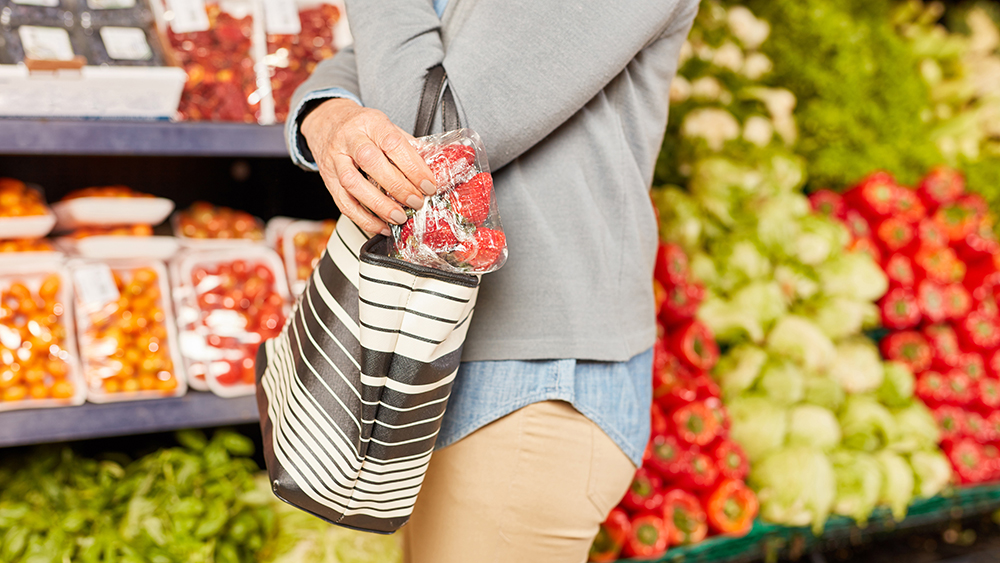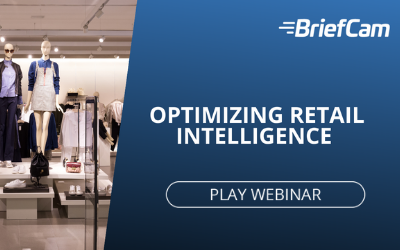Applying Video Content Analytics to Prevent Inventory Losses at Grocery Stores

Intelligent Video Surveillance for Securing Grocery Stores
Loss prevention is a top priority for all brick-and-mortar retailers, including grocery stores. Although most grocery store chains don’t employ large security teams to patrol the shopping aisles, many of them do employ security staff behind the scenes to monitor stores and warehouse facilities. Also, grocery stores commonly invest in video surveillance to enhance their security efforts; operators use such cameras to monitor facilities in real-time, and to collect and review video footage for post-incident investigation, when a crime or emergency has transpired.
There is rich, valuable data stored in those reams of video footage but, historically, it has been difficult to glean information from video footage, so the vast majority of it is never even reviewed. By introducing video content analytics software, grocery chains can turn their high volumes of video footage into searchable, actionable and quantifiable data: Intelligent video surveillance that is driven by deep learning technology processes video to detect and identify the objects that appear, classify them (people, vehicles, and other items) and then index the metadata. This enables precise video search and filtering, as well as triggering alerts, based on extensive class and attribute combinations, so operators can easily and quickly search, analyze, and comprehend video footage.
On-demand webinar, Setting the Benchmark for Intelligent Video Surveillance: BriefCam Guided Product Tour
Various organizations across industries can apply video intelligence software in a variety of ways: to respond quickly to situations, effectively review past incidents, and observe long-term trend data. Grocery store chains have been using video analytics to improve store layout, streamline the purchasing and stocking of goods, improve the customer in-store experience, and – as we’ll discuss in this blog post – prevent inventory loss.
Improve Situational Awareness and Responsiveness with Real-Time Alerts
Video intelligence systems are trained to identify and classify objects – over time, doing so enables operators to discern from aggregated data the trends, patterns and normative conditions. Then, based on the same object classification, users can create rule-based alerting logic to trigger notifications when certain conditions – or a combination of different object classes and attributes – are met. For example, based on established thresholds for regular traffic in certain areas of the store, people counting alerts can be used to notify operators when the number of customers in an area exceeds the pre-defined threshold. In such cases, the grocery store may monitor the aisle more closely to investigate the anomaly and determine what intervention – if any – is necessary.

In addition to count-based alerts, the system can trigger alerts for activity in areas off-limits to pedestrian traffic, such as stock rooms or loading docks. This can help security keep a closer eye on suspicious behaviors – whether during normal hours or after hours: Another activity that can be used to trigger alerts is illumination changes. When lights are turned on during off-hours and people are detected at unusual times, alerts and appropriate security responses can be triggered. For retailers, this could be used to react when someone might be entering a store or warehouse to steal inventory.
Track Dwell Duration
By evaluating the store floor with superimposed heatmaps based on aggregated traffic and dwell data, retail executives can easily understand the typical amounts of time consumers spend in different areas of the shop. With a deeper understanding of traffic patterns – within the store, the parking lot or the property perimeter – retailers can not only determine optimal product or advertisement placement, but also create rule-based alerts to detect anomalies or unexpected behaviors. Heatmaps can help set benchmarks for normal dwell durations, so that the system can be configured to trigger real-time alerts whenever that normal threshold is breached. Generally, stores want to see shoppers pausing at a shelf or kiosk; that behavior indicates a popular item, or display. However, if a shopper dwells for an irregularly long time, it could indicate malicious intent. By triggering an alert, store security can keep a closer eye on suspicious behaviors for proactive prevention. Alternatively, a person who is dwelling in a particular spot for a long time could be experiencing a medical emergency, in which case security should also respond quickly. In either case, video analytic dwell duration alerts are another way to enhance situational awareness in a grocery store environment.
Leverage Face Recognition
Another dimension for more targeted alerting logic is face recognition. Especially when store managers want to be alerted to activity in sensitive areas, such as inventory warehouses, stock rooms or offices, compiling a watchlist of approved, recognized employees can help security pinpoint when unwelcome individuals are detected. By triggering alerts for persons excluded from a particular watchlist, security can proactively respond to this suspicious activity.
Face matching alerts can also be configured to trigger notifications when individuals on a watchlist are recognized. When investigating previous thefts, a security team might extract images of the suspected shoplifters and compile a watchlist and alerting rules for past offenders detected in store. In this way, security can screen for suspected shoplifters returning to the store and monitor them closely to prevent repeat offenses.
Accelerate Inventory Loss and Theft Investigations
Post-event investigation after an inventory loss is a critical way for grocery managers to understand what happened and prevent future incidents. Whereas manually sifting through hours of video evidence is time consuming and prone to human error, video analytics enables rapid review of video footage through video searches with comprehensive filters, such as gender, clothing type and color and others, so that users can conduct focused searches. For example, users may search video footage for “men with a hat, wearing a blue top,” and pinpoint individuals matching that description. This rapid search functionality saves valuable time and resources and is far more accurate than manual video review.
Given that many grocery store chains have already deployed surveillance and Video Management Systems, it’s a logical step to maximize that investment with complementary video content analytics software: Video intelligence software is an easy way to increase situational awareness in-store and, ultimately, reduce the cost of inventory losses, vandalism and theft, while also gaining valuable business intelligence for optimizing grocery store operations.
Signup to receive a monthly blog digest.
